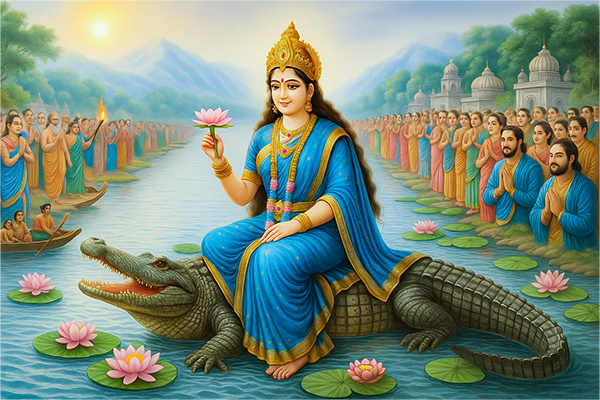
Ganga Dussehra is a sacred day filled with immense spiritual significance, celebrating the divine descent of Maa Ganga from the heavenly realms to our earthly plane. This auspicious occasion is dedicated to the purification, grace, and boundless benevolence of the holy river, revered as the celestial purifier and the embodiment of divine sanctity. Ganga Dussehra represents the profound essence of spiritual purification, the overcoming of sins, and the boundless grace of Maa Ganga in granting liberation to every soul.
In 2025, Ganga Dussehra will be celebrated on
Thursday, June 5th
. This special day invites you to immerse yourself in the holy waters of the Ganges, engage in heartfelt prayers, and join in the melodic chanting of Vedic hymns and mantras. Devotees honor Maa Ganga by presenting flowers, lighting lamps in deepa daan, and performing Ganga Aarti with heartfelt devotion.
Observing Ganga Dussehra with sincerity is thought to wash away past sins, purify the soul, and bestow divine blessings for spiritual progress and inner peace. On this sacred occasion, devotees earnestly seek the blessings of Maa Ganga for prosperity, righteousness, and ultimate liberation.
Festival Date, Time, Muhurat & Tithi
Ganga Dussehra will be observed on
Thursday, June 5th, 2025.
Dashami Tithi (10th lunar day) of the Jyeshtha month as per the lunar calendar.
Key Timings for Ganga Dussehra 2025:
-
Ganga Dussehra Muhurat:
05:25 AM to 07:40 AM (IST)
Duration: 2 Hours 15 Minutes - Dashami Tithi begins at 04:50 AM on June 4th (IST)
- Dashami Tithi ends at 06:10 AM on June 5th (IST)
-
Ganga Puja Muhurat:
05:30 AM to 06:45 PM (IST)
Duration: 13 Hours 15 Minutes - Hasta Nakshatra Begins - 03:35 AM on Jun 05, 2025 (IST)
- Hasta Nakshatra Ends - 06:34 AM on Jun 06, 2025 (IST)
- Vyatipata Yoga Begins - 09:14 AM on Jun 05, 2025 (IST)
- Vyatipata Yoga Ends - 10:13 AM on Jun 06, 2025 (IST)
Hasta Nakshatra:
The Hasta Nakshatra falls between degrees 10 and 23:20 in the Virgo zodiac sign. Hasta Nakshatra has power from the Sun, ruled by the moon. Hasta Nakshatra is the best of both worlds—strength and sensitivity.
Vyatipata,
the 17th Nitya Yoga, ruled by Rudra, is considered highly malefic. Its influence signifies disaster or calamity, making it inauspicious for starting anything new. This phenomenon occurs when the combined positions of the Sun and the Moon reach half a circle, which equals 180° or 6 signs in astrology.
Note: Sunrise and sunset vary by region and date due to India's geographical diversity. For exact timings, please refer to local astronomical data.
Significance & Importance of Ganga Dussehra
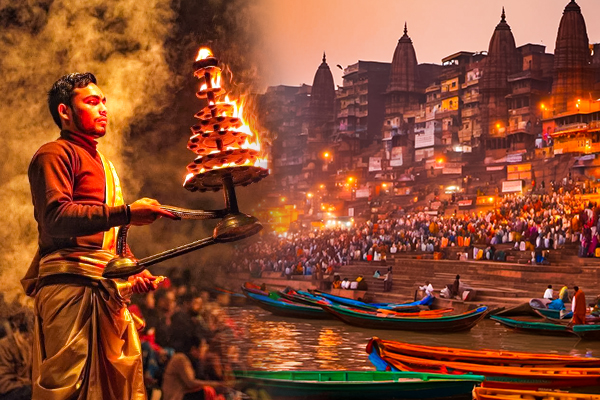
'Prithiviya Apo Rasah'—meaning 'the water is the essence of the earth'—is a profound statement from the Chhandogya Upanishad that highlights the sacred nature of water. Among all rivers in India, Maa Ganga is regarded as the most divine, making her existence deeply auspicious and revered. In Hinduism, Ganga Mata is worshiped as the Goddess of Purity and Forgiveness. She is considered a motherly figure, and it is believed that immersing the ashes of one's kin in her waters brings their souls closer to Moksha. A sacred dip in the Ganga with a pure mind is said to absolve devotees of their sins.
Ganga Dussehra, also known as Ganga Gangavataran or 'Jeth Ka Dussehra,' falls in the Hindu month of Jyeshtha, also known as 'Jeth' in some regions. It commemorates the divine descent of Maa Ganga to earth to liberate the souls of King Bhagirath’s forefathers from a curse. This is distinct from Ganga Jayanti, which celebrates her rebirth. Prior to her descent, Ganga resided in the heavenly realms, constantly pleasing the gods and celestial beings. When she finally descended, she sanctified the earth and bestowed upon it a divine status. Revered as Ganga Devi or Ganga Maa, she is considered ever-pure and forgiving. Her vahana (mount) is the Makara or crocodile, symbolizing strength and resilience.
Ganga Dussehra is celebrated on the tenth day of the Shukla Paksha (waxing Moon) of Jyeshtha, usually in May or June. It is observed with great devotion in states such as Uttarakhand, Uttar Pradesh, Bihar, and West Bengal, with cities like Haridwar, Rishikesh, Varanasi, Prayagraj, Patna, and Garhmukteshwar witnessing grand celebrations. The festival extends over ten days, with the final day—Ganga Dussehra—being the most significant.
Devotees perform ritualistic worship, take a holy dip in the river, and believe that every ten dips taken over these ten days cleanse sins of ten lifetimes, ultimately leading to salvation. The sacred water of the Ganga is an integral part of Hindu rituals, as it is sprinkled during all auspicious ceremonies. On this day, elaborate aartis are performed on the ghats, with thousands of devotees gathering to honor Goddess Ganga.
At Haridwar, the fervor of the celebrations is particularly remarkable, attracting pilgrims and tourists from across India and beyond. The sight of thousands of lit diyas floating on the serene waters of the Ganga creates a divine spectacle, as devotees seek blessings and pray for the fulfillment of their wishes.
In Varanasi, the famous Dashashwamedh Ghat becomes a center of devotion, where devotees take ten holy dips and offer floating diyas in homage to the sacred river. Ganga Dussehra is not only a religious festival but also a celebration of the life-giving force of the river, which sustains agriculture and civilizations along its banks.
The festival serves as a reminder of the river’s eternal grace, purity, and the spiritual liberation she bestows upon her devotees.
Legends & Scriptural References of Ganga Dussehra

The legend of Ganga’s birth is an ancient and sacred tale, originating from the Bhagavata Purana. It is said that when Bhagwan Vishnu took the divine form of Vamana, the Dwarf Brahmin, he stretched his left foot across the cosmos to measure the Universe. As his foot reached the celestial boundary, the nail of his big toe pierced a hole at the edge of existence. From this opening emerged the Divine Brahm-water—the Causal Ocean—manifesting as the sacred River Ganga. Having first touched the lotus feet of Bhagwan Vishnu, she became known as Bhagavat-Padi or Vishnupadi. Ganga then descended to Brahmaloka, the heavenly abode of Bhagwan Brahma, where she remained until her destined journey to Earth.
The descent of Ganga to the mortal world is intertwined with the unwavering devotion of King Bhagiratha. Generations before him, King Sagara, an ancestor of the Ikshvaku dynasty, had performed a powerful yajna (sacrifice), sending his sixty thousand sons to recover the sacred horse stolen by Indra. Their relentless search led them to the hermitage of Sage Kapila, where their unruly presence disturbed his deep meditation.
In a burst of yogic fury, the great sage reduced them to ashes, leaving their souls to wander restlessly without liberation. The responsibility to redeem them fell upon their nephew, Anshuman, and later his son, Dilip. Both prayed with immense sincerity, seeking Brahma’s blessing for Ganga to descend and cleanse the souls of the fallen princes, yet their efforts bore no fruit.
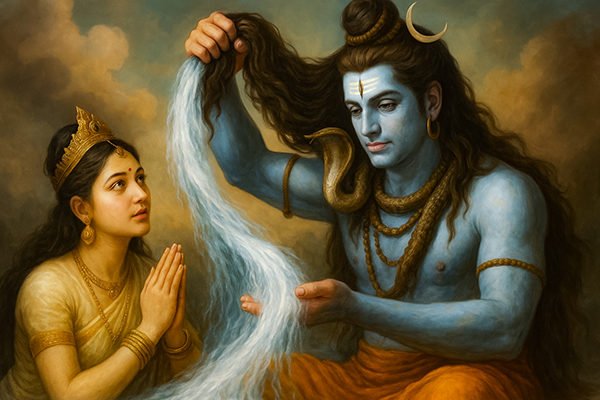
It was King Bhagiratha, the son of Dilip, who undertook the most intense penance, meditating for years with unwavering faith. Pleased with his devotion, Bhagwan Brahma finally granted his request, permitting Ganga to descend upon the Earth. However, there was one great challenge—her celestial descent was so powerful that it could devastate the entire world. Ganga, proud of her divine origins, intended to unleash her mighty force and sweep away the Earth. To prevent this catastrophe, Bhagiratha turned to Bhagwan Shiva, the Supreme Lord, seeking his intervention.
With immense compassion, Bhagwan Shiva caught Ganga in his thick matted locks, subduing her unrestrained fury. Trapped within his divine hair, Ganga struggled but could not flow freely. After much pleading from Bhagiratha, Lord Shiva gently released her in controlled streams, allowing her sacred waters to purify the Earth without destruction. As she flowed, Ganga followed Bhagiratha’s chariot, ultimately reaching the ashes of King Sagara’s sons, granting them liberation and eternal peace.
Beyond her celestial origins, Ganga’s presence is deeply woven into Hindu epics. In the Mahabharata, she is not only a goddess but also a mother. She took human form as the wife of King Shantanu, and together they bore Bhishma, the valiant patriarch of the Kuru dynasty. Bound by a divine oath, Bhishma remained the guardian of the throne, his life a saga of duty and sacrifice. In the great battle of Kurukshetra, as Bhishma lay fatally wounded upon a bed of arrows, it is said that Ganga emerged from her sacred waters, mourning inconsolably for her beloved son.
Ganga’s presence is also found in the Rigveda, one of the most ancient and revered Hindu scriptures. In the Nadi-Stuti (hymn of rivers), various sacred rivers of Bharat are mentioned, including Ganga. Though the reference may not be as detailed, it signifies her eternal place in Vedic traditions as a source of purity and divine blessings.
Thus, the legend of Maa Ganga is one of divine grace, redemption, and maternal compassion. She is not merely a river but a celestial force, descending from the heavens to cleanse, nurture, and guide humanity towards spiritual liberation.
Even today, her sacred waters continue to flow, carrying with them the prayers, hopes, and devotion of millions who revere her as the ever-pure, ever-forgiving Goddess of Purity and Moksha.
What to Do on Ganga Dussehra?
Ganga Dussehra signifies the tenfold Vedic auspiciousness that underscores the divine power of Maa Ganga to purify sins arising from thoughts, words, and deeds. These ten sacred aspects include the Jyeshtha month, Shukla Paksha, the tenth lunar day (Dashami Tithi), Thursday, Hasta Nakshatra, Siddha Yoga, Gar-Anand Yoga, and it is believed that offering prayers on this day bestows divine grace and paves the path to salvation.
This sacred occasion is also considered highly auspicious for acquiring valuable possessions, purchasing new vehicles, or investing in property. Devotees who stand in the sacred waters of the Ganges and recite the revered Ganga Stotra are said to attain absolution from all sins. Bathing in the holy river on Ganga Dussehra is believed to not only purify the soul but also alleviate physical ailments, granting spiritual upliftment and well-being.
The very name of the festival embodies its spiritual essence: in Sanskrit, 'Dasha' means ten, and 'Hara' means to destroy. Thus, it is believed that immersing oneself in the sacred waters of Maa Ganga during these ten auspicious days cleanses an individual of ten forms of sin or, alternatively, the accumulated sins of ten lifetimes, leading to inner purification and divine blessings.
Devotees observe this auspicious occasion by taking a holy dip in the Ganges, believing it absolves sins of ten lifetimes and alleviates ailments. If visiting the river is not possible, they mix Ganga Jal in their bathing water. Special pujas and grand Ganga Aartis are performed at holy sites like Haridwar, Varanasi, Prayagraj, and Rishikesh, where thousands gather to offer flowers, incense, and diyas to the sacred river. Chanting Ganga Stotra, Vishnu Sahasranama, or Ganga Ashtakam, along with meditative prayers, deepens the spiritual experience.
Acts of charity, such as donating food, clothes, and essentials to the underprivileged, are considered highly meritorious. Fasting (Upvas) is also observed, with devotees consuming sattvic food while engaging in devotional practices. The festival is deemed auspicious for purchasing valuables, new vehicles, or property. Worship of Lord Shiva and Lord Vishnu is performed, as Ganga first touched Vishnu’s feet before descending and was later tamed by Shiva’s matted locks.
A significant ritual on this day is the floating of diyas in the river, symbolizing surrender to Maa Ganga and seeking her divine grace. The celebration is most vibrant at sacred places like Haridwar’s Har Ki Pauri, Varanasi’s Dashashwamedh Ghat, and Prayagraj’s Triveni Sangam, where devotees take part in sacred bathing and grand aartis.
Observing Ganga Dussehra with faith, selfless service, and devotion is believed to bring spiritual upliftment, divine blessings, and ultimate liberation.
Ganga Dussehra Puja Vidhi (Puja Procedure)
.jpg)
The observance of Ganga Dussehra involves sacred rituals dedicated to Maa Ganga, symbolizing spiritual purification and liberation.
Devotees begin preparations by rising early in the Brahma Muhurta (pre-dawn hours) and taking a ritual bath, preferably in the holy waters of the Ganga. If visiting the river is not possible, adding a few drops of Ganga Jal to regular bathing water is considered equally purifying. Wearing clean, traditional attire and maintaining a sattvic (pure) state of mind is essential before commencing the puja.
- The puja begins with Sankalpa, where the devotee mentally expresses their intent to worship Maa Ganga for spiritual purification, absolution of sins, and divine blessings.
- The sacred Kalash Sthapana (placing a water-filled copper or brass pot) is performed, symbolizing the presence of the holy river.
- A diya (lamp) is lit, and incense sticks are offered to invoke auspiciousness. The idol or image of Ganga Devi is decorated with flowers, and offerings such as fruits, sweets, rice, and sesame seeds are placed before her.
- The recitation of Ganga Stotra, Ganga Ashtakam, or Vishnu Sahasranama is an integral part of the puja. Devotees also chant 'Om Gangayai Namah' or 'Har Har Gange' while offering prayers.
- If performing the puja at home, sprinkling Ganga Jal in all corners of the house is believed to purify the environment. Special prayers are offered to Lord Shiva, as he tamed Maa Ganga in his matted locks, and Lord Vishnu, as she first touched his feet before descending to Earth.
One of the most significant rituals of Ganga Dussehra is taking a holy dip (Snan) in the Ganges. Bathing in the river on this day is believed to wash away the sins of ten lifetimes and grant divine blessings. If unable to visit the river, devotees symbolically bathe by sprinkling Ganga Jal over their heads. The ritualistic immersion in the sacred waters is often accompanied by chanting Vedic hymns and mantras, seeking spiritual purification and well-being.
After the main puja, devotees perform Daan (charity), which includes donating food, clothes, and essentials to the needy. Offering items such as water pots, fans, fruits, and umbrellas is particularly auspicious, as Ganga Dussehra falls in the peak summer month of Jyeshtha. Feeding cows, birds, and other creatures is also considered an act of merit (Punya). Many devotees observe a Vrat (fast) on this day, consuming only sattvic food like fruits, milk, and water while engaging in meditation and prayers.
As the day concludes, the Ganga Aarti is performed at prominent ghats in Haridwar, Varanasi, Prayagraj, and Rishikesh. Thousands of devotees gather to witness this grand spectacle, offering floating diyas (lamps) in the river as a mark of devotion and gratitude. This divine ritual, accompanied by the chanting of hymns and the rhythmic sounds of bells and conches, creates a deeply spiritual atmosphere.
Observing Ganga Dussehra with sincerity, devotion, and charitable acts is believed to bring divine grace, peace, and liberation from the cycle of birth and death.
Ganga Dussehra Puja Mantra
Ganga Aarti Mantra (Chanted During Evening Aarti)
॥ Jai Jai Gange Mata, Maiya Jai Jai Gange Mata ।
Jo Nar Tumko Dhyata, Man Vanchhit Phal Pata ॥
Meaning:
Victory to you, O Mother Ganga! Those who meditate
upon you attain their heart’s desires.
Ganga Dussehra Vrat Vidhi (Fasting Procedure)
.jpg)
Observing a Vrat (fast) on Ganga Dussehra is considered highly auspicious, as it is believed to cleanse one's sins and grant divine blessings. Devotees begin the day by waking up early during Brahma Muhurta and taking a ritual bath, preferably in the holy Ganga River or by adding Ganga Jal to their bathing water.
After wearing clean and traditional attire, they offer prayers to Maa Ganga, seeking her blessings for purification and spiritual upliftment. The Sankalpa (pledge) for the fast is taken by resolving to observe the vrat with sincerity, devotion, and adherence to spiritual discipline.
During the fast, devotees abstain from consuming grains, lentils, and heavy foods. Many observe a nirjala vrat (waterless fast), while others partake in a phalahar vrat, consuming only fruits, milk, and water. Ganga Jal is considered sacred and is often sipped throughout the day to maintain purity. The devotee engages in chanting Ganga Stotra, reciting Vishnu Sahasranama, and performing Ganga Aarti at home or by the riverbanks. Charity and daan play a crucial role in the vrat; donating food, clothes, water pots, umbrellas, and other essentials to the needy is considered highly meritorious.
In the evening, devotees conclude the fast after performing Ganga Puja, lighting diyas, and offering prayers with bhog (sacred food offering). If observing a nirjala vrat, they break the fast with water and fruits, followed by a simple sattvic meal. Devotees immerse themselves in Ganga Aarti at sacred ghats like Haridwar, Varanasi, and Prayagraj, floating diyas in the holy river as an act of devotion.
Observing Ganga Dussehra Vrat with sincerity is believed to bestow prosperity, spiritual elevation, and moksha (liberation from the cycle of birth and death).
Ganga Dussehra Vrat Katha (Traditional Fasting Story)
.jpg)
Once upon a time, in the celestial realms, the divine River Ganga flowed blissfully, adorning Lord Vishnu’s feet before settling in Lord Brahma’s heavenly abode. However, her descent to Earth was predestined by a great act of devotion. In the mortal world, there ruled a mighty king named Sagara, blessed with sixty thousand sons. To establish his supremacy, he performed the Ashwamedha Yajna (horse sacrifice ritual), but fate had other plans. As part of the ritual, a sacred horse was set free to roam, but Lord Indra, the king of the gods, grew envious and cunningly hid the horse in the hermitage of Sage Kapila, who was deep in meditation.
When King Sagara’s sons arrived in search of the horse, they disturbed the sage’s penance, causing his divine fury to reduce them to ashes instantly. Their souls remained trapped in a restless state, unable to attain moksha (liberation). The heartbroken king and his descendants—Anshuman and later Dilip—prayed for the release of their ancestors' souls but failed. Generations passed, and then came King Bhagiratha, a ruler of unwavering faith and determination. Renouncing all royal comforts, he undertook an intense penance for thousands of years, invoking Lord Brahma, pleading for River Ganga to descend to Earth and cleanse the sins of his forefathers.
Pleased by his devotion, Brahma granted the boon but warned that Ganga’s forceful descent could shatter the Earth. To avert catastrophe, Bhagiratha turned to Lord Shiva, who compassionately caught Ganga in his divine matted locks (jata) and released her in gentle streams. As the heavenly river flowed, she followed Bhagiratha’s path through the mountains and plains until she reached the spot where the ashes of Sagara’s sons lay. The moment Ganga’s sacred waters touched them, their souls were liberated, ascending to the higher realms in peace.
Thus, Ganga Dussehra commemorates the divine descent of River Ganga, a blessing upon humanity. Devotees believe that fasting, offering prayers, and taking a dip in the river on this sacred day washes away tenfold sins, heals ailments, and grants salvation. With each diya lit and every mantra chanted, the heart resonates with the celestial grace of Maa Ganga, the eternal river of purity and forgiveness.
Puja Utensils, Essentials
Rudra Centre brings an extensive collection of Puja Articles which caters to all that is required for daily and special Puja Vidhis. We offer variants of designs and sizes in each category. The list includes handcrafted Puja Mandirs, Puja Pedestals, offering Bowls, Panchpatra, intricately carved Puja Thalis, Abhishek Vessels, in different materials, Pure Silver/German Silver articles like Kalash, set of Shodash Upachara and Several other Puja Articles, which we deliver at your doorstep.
Visit the complete collection:
Gangajal bottle

The holy water of the Ganges in Himalayas is unique for its crystal purity and sacred herbs with multi-minerals. To reach you in its pristine state, the bottles are sealed hermetically, untouched by human hand keeping all the natural qualities of improve digestion, sweetness, coolness and high tonic properties of the water.
Gangajal Carton

Ganga is the sacred river of india which originated from gangotri in the himalayas. The river ganga has a deep association with indian history since the time of mahabharata and ramayana. People consider ganga water as holy and believe that the river ganga is the river from heaven to earth. Ganga is the river of gods and anyone who takes bath in the river will be released from the eternal cycle of rebirth.
Ganga Mata Chalisa Paath
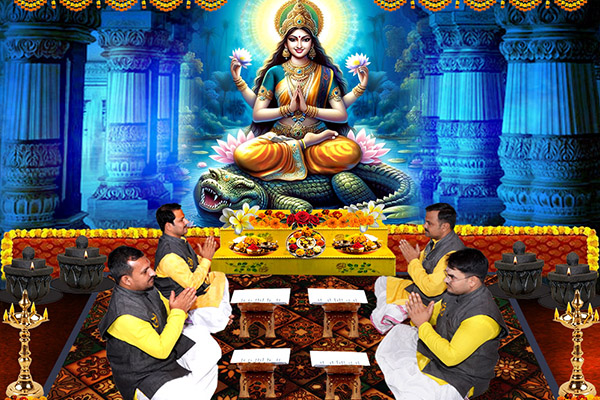
Goddess Ganga Chalisa is a devotional hymn dedicated to Goddess Ganga. In Hindu Dharma the river Ganga is considered as a living Goddess and is considered sacred as none other. Ganga is regarded as jeevan-dayani meaning ‘giver of life’ and also moksha- dayani meaning ‘giver of liberation’ in Hinduism. According to the belief, Goddess Ganga washes away the sins of people and brings them out of the cycle of life and death and provides salvation.
Ganga Mata Chalisa Paath Benefits:
• Blessing of peace of mind and growth
• Washing away of all sins and negative karma
• For spiritual growth and upliftment
• Divine grace and blessings of Goddess Ganga
Rudra Centre Puja Services is the oldest and most trusted Online Puja Services provider in the world. Over 20 years we have organized Yagnas, Pujas, Homas and Kathas like Ati Rudra Mahayajna, Sahasra Chandi Homa, Akhand Ramayan Paath, Shiva Maha Puran Katha, 4 Prahar Mahashivratri Mahapuja with teams of 100’s of curated priests for the benefit of mankind and our global clientele.
Conclusion
Ganga Dussehra is a celestial reminder of the boundless mercy and purity of Maa Ganga. Her descent from the heavens was not just to quench the thirst of the Earth but to cleanse the souls of mortals, uplift the fallen, and bestow liberation upon the devoted. Just as her waters wash away the sins of ten lifetimes, this holy occasion inspires us to purify our hearts, shed our burdens, and surrender to the infinite compassion of the Divine.
As devotees stand at the riverbanks, immersed in prayers, offering lit diyas that float upon the rippling waters, they symbolize the light of wisdom, faith, and surrender. The rhythmic chants of Ganga Stotra, the gentle flow of sacred waters, and the golden hues of the setting sun all weave a moment of transcendence—a reminder that the path to liberation lies in devotion, humility, and unwavering faith. May the blessings of Maa Ganga flow eternally, guiding humanity toward truth, righteousness, and spiritual awakening.

-in-Astrology.jpg)
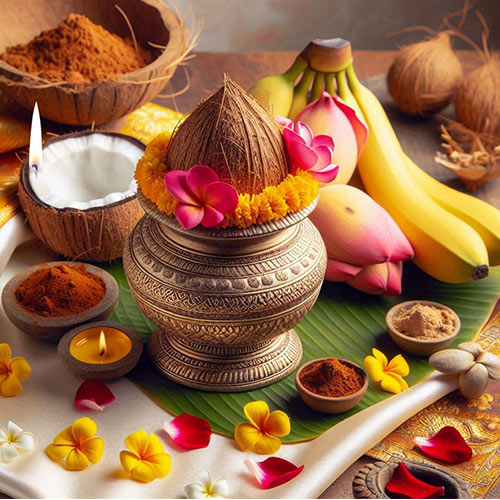
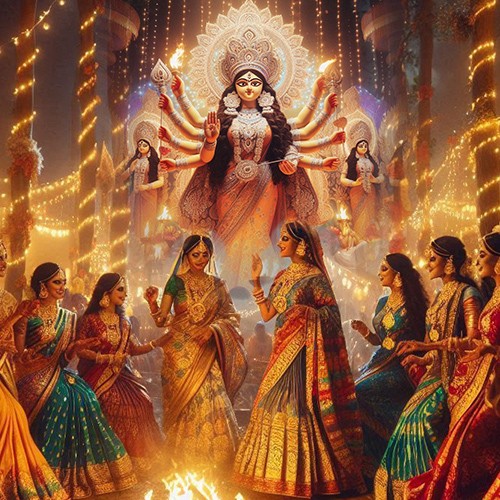



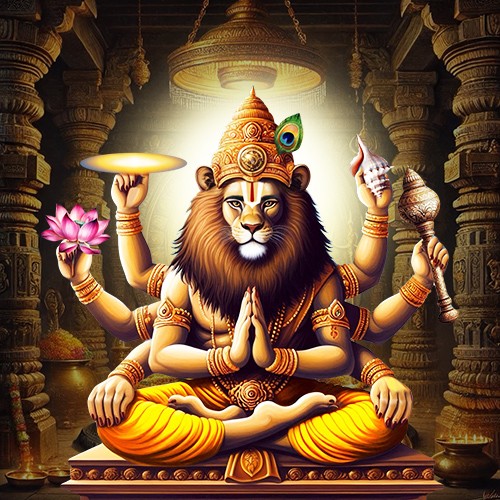
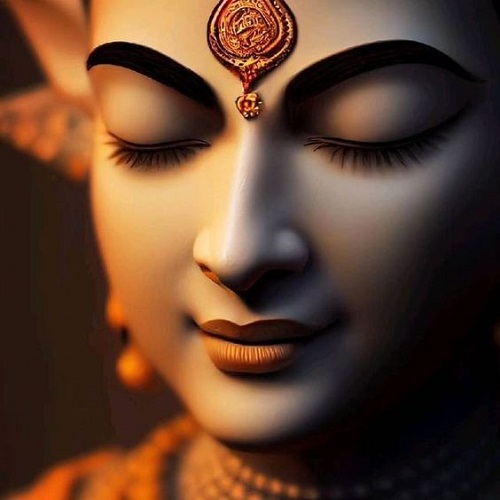
.jpg)

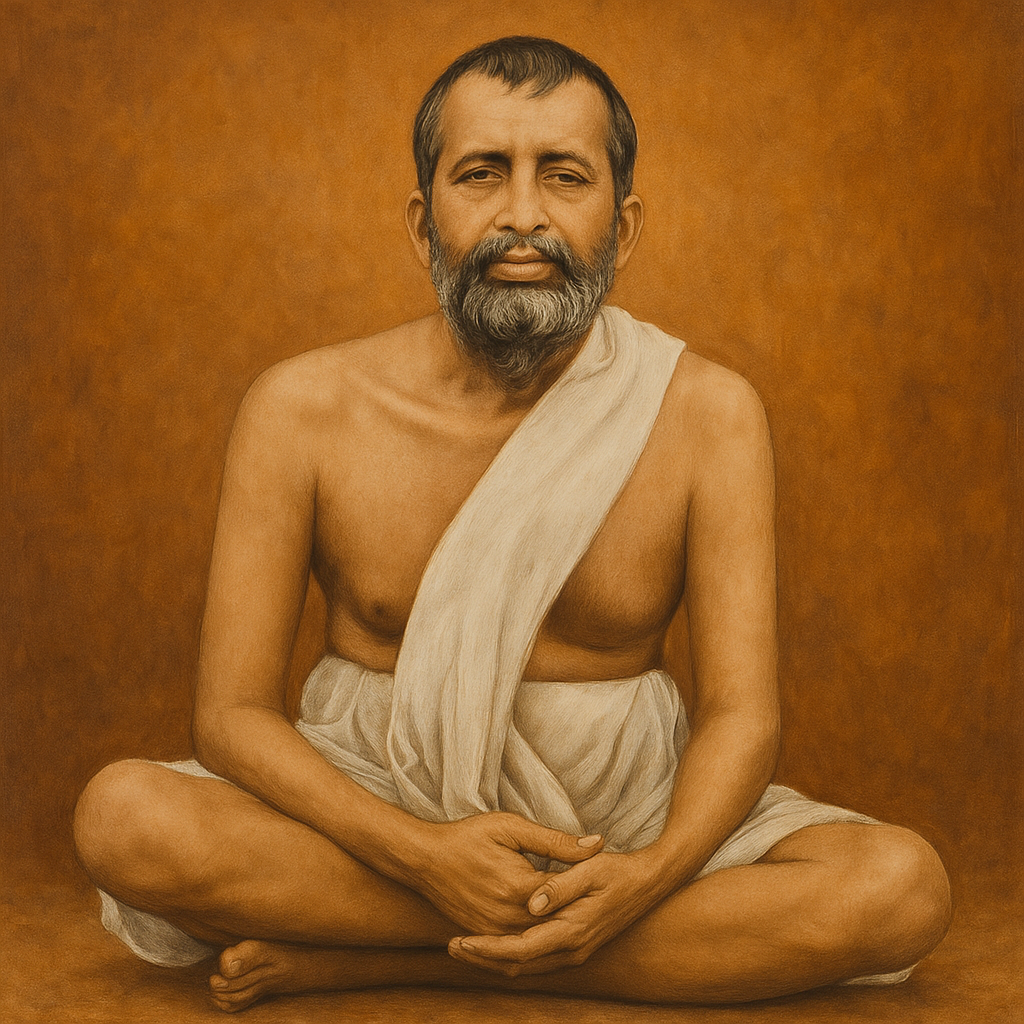
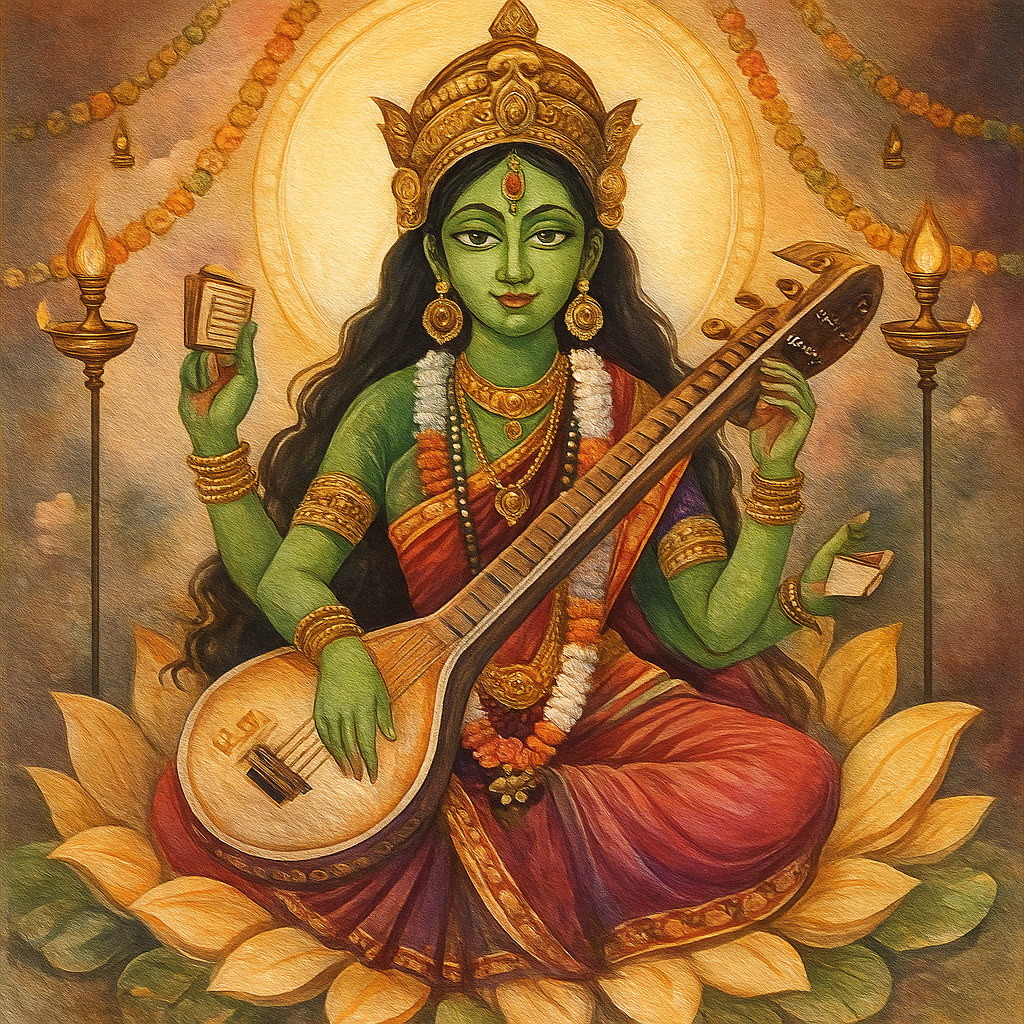
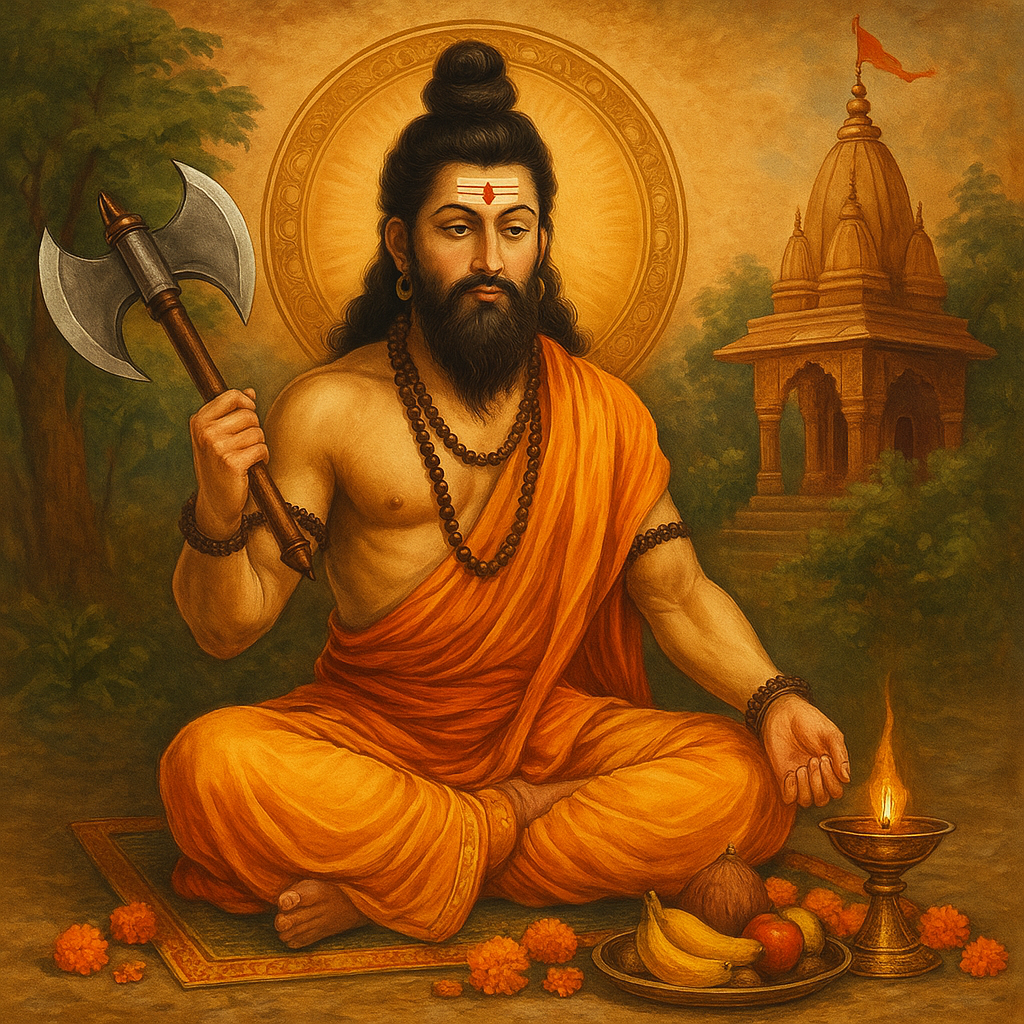
Comments 0
Leave your thought here